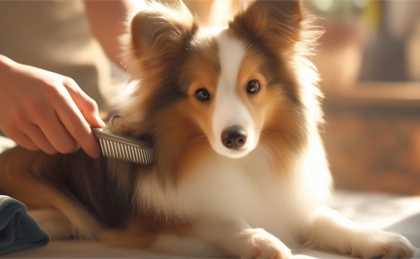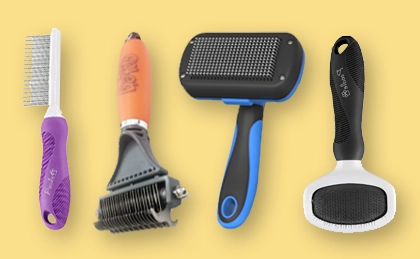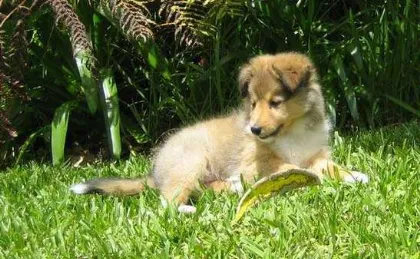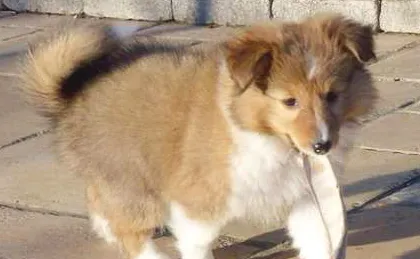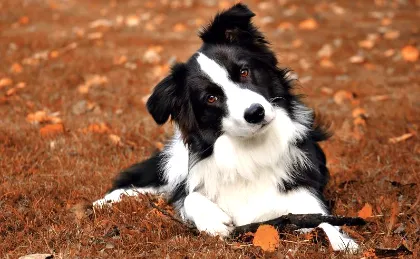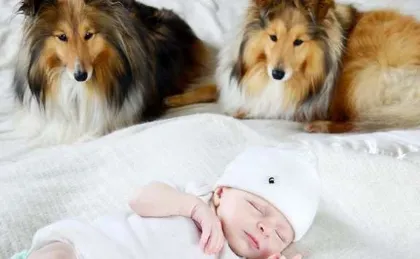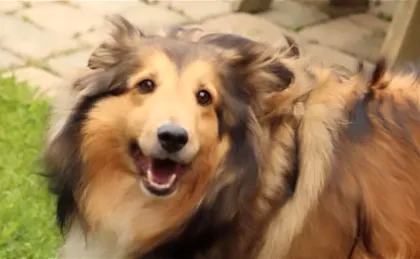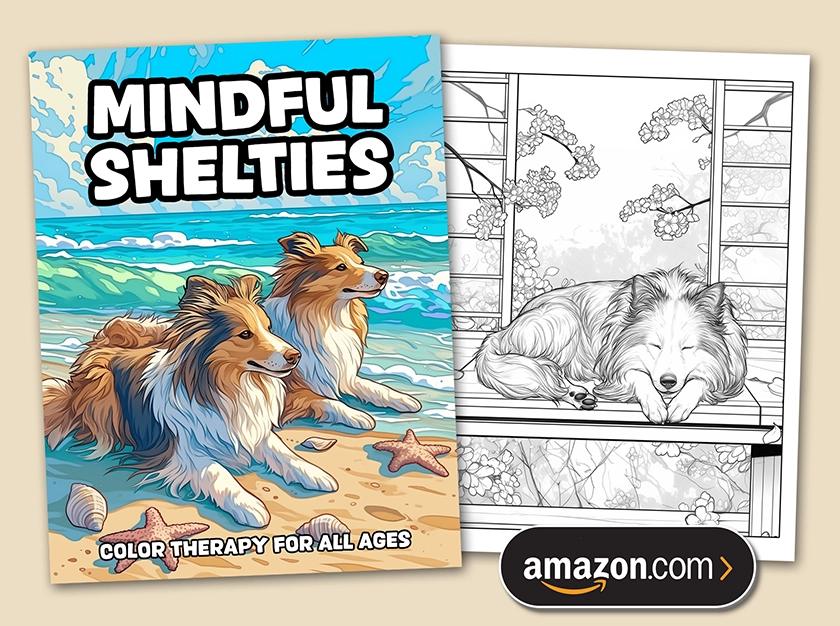Separation anxiety in Shelties is a psychological disorder where dogs feel intensely fearful of being left alone. Here are 6 ways to help your Sheltie deal with it.
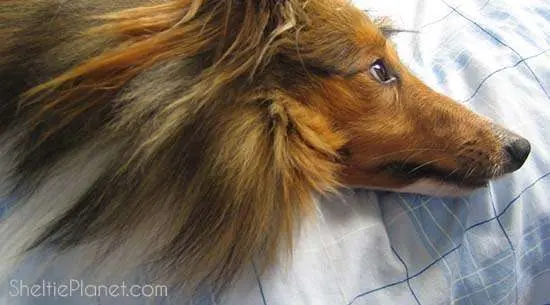
Separation anxiety is a real problem for many dogs. When you leave for work in the morning, your dog may be plunged into a state of nervous anxiety which intensifies rapidly without your return.
Dogs are social animals. They need an abundance of human company and social interaction to feel happy. And while no dog likes to be left alone for long stretches of time, some breeds like Shelties can suffer a lot more because of their sensitive psychological disposition. Your Sheltie's ancestors were bred to be highly sensitive alarm dogs, and this inherited personality trait holds strong today. As a result, Shelties are always on the lookout for danger, and crave being near you so they can alert you to any suspicious happenings.
4 Causes of Separation Anxiety in Shelties
There are a few potential causes of this condition:
1. Genetics. Some dog breeds are genetically predisposed towards anxiety and insecurity. This is definitely worth taking into account before buying a puppy, particularly if you're out the house most of the day. The breeds most susceptible to separation anxiety include Shetland Sheepdogs, Weimaraners, Springer Spaniels, and German Shepherds.
2. Trauma. A large proportion of dogs from puppy mills and rescue shelters develop separation anxiety. Many have undergone significant trauma in their lives, and at the very least have been abandoned by their owners. They're left feeling anxious that their new family is going to pull the same trick and leave forever.
3. Early Weaning. Puppies separated too early from their mothers and littermates are especially prone to separation anxiety. Pet store puppies are prime examples. Often sourced from puppy mills, they're taken from their mothers when they're still helpless, in order to make way for more puppies. The babies are confined to small glass boxes or cages in pet stores for weeks or months. This early weaning is traumatic itself, and further compounded by social isolation in the pet store.
4. Neglect. Sadly, neglect is the number one cause of separation anxiety for dogs. If you're absent much more than you're present in your dog's life, then separation anxiety is pretty much inevitable. Your dog needs your companionship, affection, and attention in order to be happy and content.
Symptoms of Separation Anxiety
The symptoms of separation anxiety are pretty distinctive if you pay attention. Your Sheltie knows when you're about to leave her alone: she hears keys jangling, sees you putting on your shoes, but there is no leash in sight. It makes her anxious immediately. She may follow you from room to room, whining for you to stay. Some dogs can even become aggressive in an attempt to stop their owner leaving.
Once you're gone, the anxious behavior worsens and peaks within half an hour. Your Sheltie may bark incessantly, scratch at windows and doors to escape and find you, chew household items, and even urinate or defecate inside the house. A Sheltie with extreme separation anxiety may self-mutilate by licking or chewing her skin, pulling out her fur, and engaging in obsessive-compulsive behaviors like spinning and tail-chasing.
On your return, she'll be excessively excited, leaping around you in a frenzy of delight for a protracted period of time (way more than the 30-60 seconds of a happy, well-balanced dog.) This extended greeting is a source of some misunderstanding. Not realizing it's a symptom of separation anxiety, some owners encourage their Sheltie to get more worked up on their return, by encouraging them to jump and bark even more. This just makes it harder the next time they leave.
6 Ways to Treat Separation Anxiety in Shelties
Fortunately, there are things you can do to minimize your dog's anxiety.
1. Exercise Your Sheltie
The longer you expect to be away, the more exercise she needs before you leave. If you're leaving for work in the morning, she'll be by herself for the whole day, which is hell for a Sheltie. One way you can help her is to wear her out so she's mentally stimulated and has less nervous energy to burn.
2. Offer Dog Chews
Distract her boredom, loneliness, and anxiety with lots of tasty dog chews. Dogs explore the world with their mouths, so chewing can be very stimulating and satisfying. Stock up on rawhides to distract her when you're leaving, and place chew toys around her favorite spots in the home.
3. Provide a Background Noise
The house can be too quiet while you're away, leaving your Sheltie with no option but to listen out for every car door slam, every voice in the street, and every other distant noise that might signify an incoming threat. So give her company while she's alone. Put the radio on a soothing station like classical music, or let her hear familiar human voices on talk shows. Just keep the volume low so you don't accidentally overstimulate her. Make the house sound like it does when you're home, it's a good reminder that she's safe.
4. Give Her a View
Let your Sheltie climb on the couch by the window if she wants to. This empowers her to see the world go by if that's what she craves. To her, it's the next best thing to being out and about.
5. Practise Leaving in Peace
Train your Sheltie to be calmer when you leave the house. You can practise this by getting ready to go out, closing the door, and then coming back in a few seconds later. Each time you do this in succession, she'll realize there's less reason to be anxious because you came back right away. Finally, when there's no fearful reaction, give her a treat and lavish her with praise for being so brave.
6. Don't Coo When She's Scared
Never act overtly sympathetic when your Sheltie whines with separation anxiety. Although it sounds cold-hearted, it's actually the best way to strengthen her state of mind. Soothing your dog by patting and cooing actually validates her concern. She thinks you're saying "good girl" in response to her fearful submission. She figures she's doing the right thing! So instead, model calmness and confidence, and do everything you can to hide your concern so she doesn't pick up on the wrong cue.
Final Thoughts
Separation anxiety in Shelties is sadly all too common. But it affects many other dog breeds too. So please share this with your other dog-loving friends and help them understand their dog's nervous behavior.
If your dog is alone for much of the day, think outside the box to get her some good company. Perhaps your retired neighbor is lonely too, and would love to spend time with your dog. Or maybe there's a dog walker who can come in and break up the day. Just make sure any changes are implemented sensitively, giving your anxious Sheltie the time she needs to adapt to new people and situations. In the long run, broadening her sense of safety in more varied situations will help reduce her nervous disposition too.
